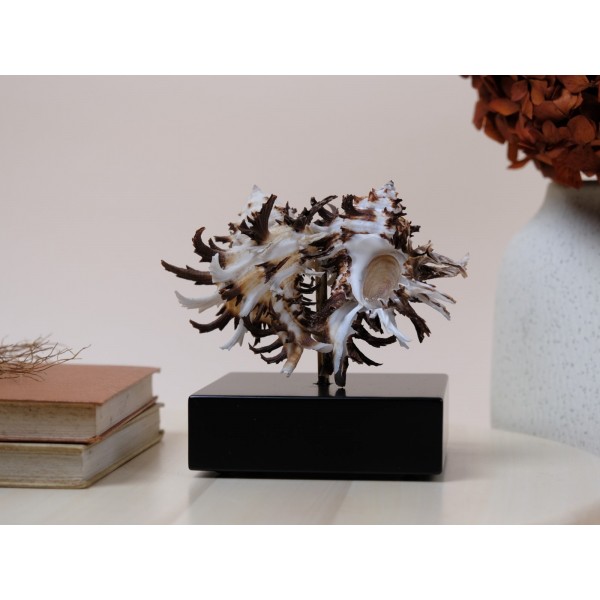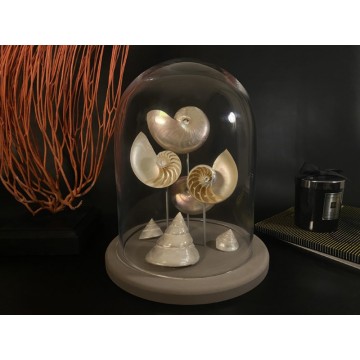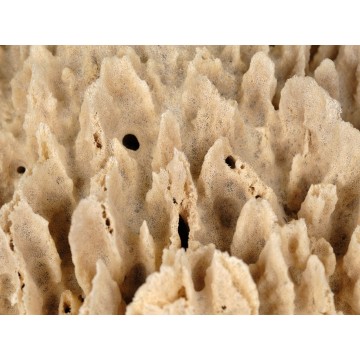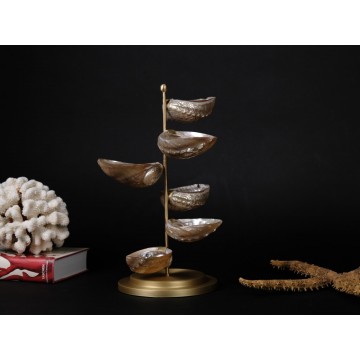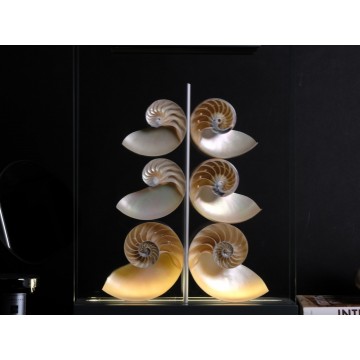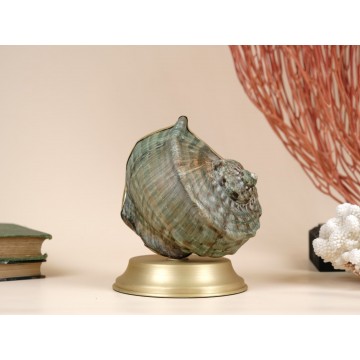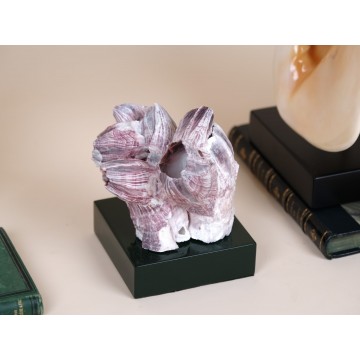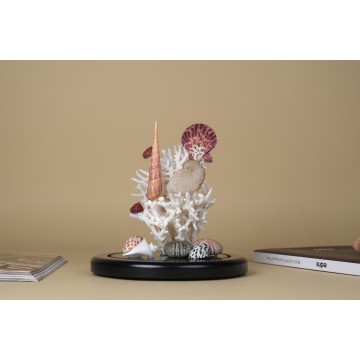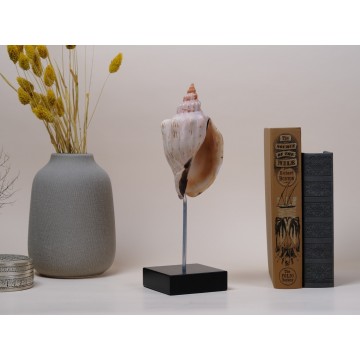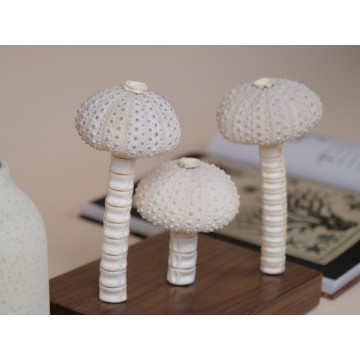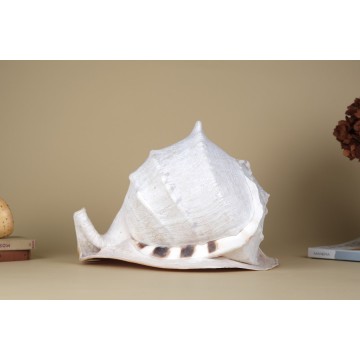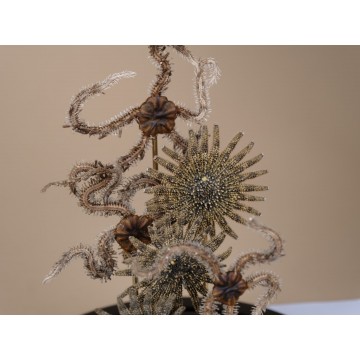Marine life dome
This delightful mini marine life glass dome features a thoughtfully curated collection of stunning ocean treasures:
A Acropora latistella coral from the Solomon Islands, admired for its intricate branching structure.
A Pecten nobilis scallop, Terebra dimidiata, and Conus tessulatus, alongside two Nerita textilis and a Clanculus puniceus shell, all sourced from the Philippines, showcasing a variety of shapes and patterns.
A vibrant green sea urchin from Madagascar, adding a striking pop of color and texture.
The harmonious contrast of colors and forms makes this piece a captivating decor item.

